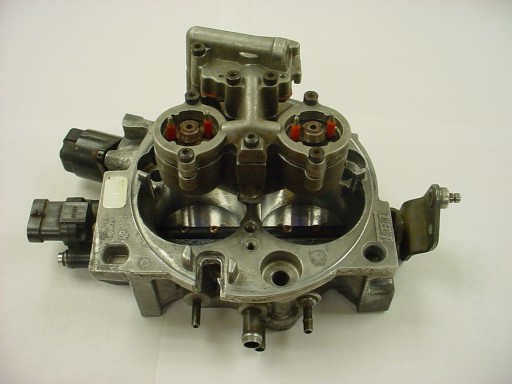|
Welcome to my TBI
page, where you actually get some worthwhile information that
doesn't just bash this fuel injection system. So, if you came here to find me
ragging on TBI and telling you how much it sucks and how much better TPI
is, you are at the wrong place. Here you will find out what makes
TBI a great fuel injection system, and what you can do to improve
the performance of your TBI-powered F-Body, or even truck, or whatever
other GM vehicle you have that has TBI.
First off, if you
don't know what TBI is, it is basically like a carb, but instead of
using the vacuum created by the engine to "suck" the fuel into
the intake (and then into the engine), TBI uses fuel injectors and "pushes"
the fuel into the intake at high pressure.

Here is a pic of a typical GM throttle body. You can see the two throttle bores
and the two injector housings right above the bores.
One
of the many reasons that TBI is so underrated and so many people bash it
is not because of TBI itself, but because of the motors that it is
bolted to. For example, the F-Body TBI motor is the L03.
From the factory rated at 170 horsepower and 255 torque.
Yeah...in stock form compared to an LB9 305 TPI, this engine is a
dog. But comparing these two engines is like comparing apples to
oranges...they just aren't the same. Different heads, cam and
exhaust. If you were to take the same engine combo and ONLY switch
the injection systems, things would be a lot closer. That's all I
have to say about that without getting into the technical aspects of it.
TBI actually started out on
the Corvette with Cross-Fire Injection. It came on '82 and '84
Vettes. It was on top of a 350, not a 305 though in the Vettes.
TBI was also the injection system of choice for
hundred of thousands (maybe millions?) of GM trucks, both full size and
mid size.
And, TBI came on a lot of full-size GM cars, such as
the Caprice, which means that there are a lot of cop cars around with a
TBI system on them. |